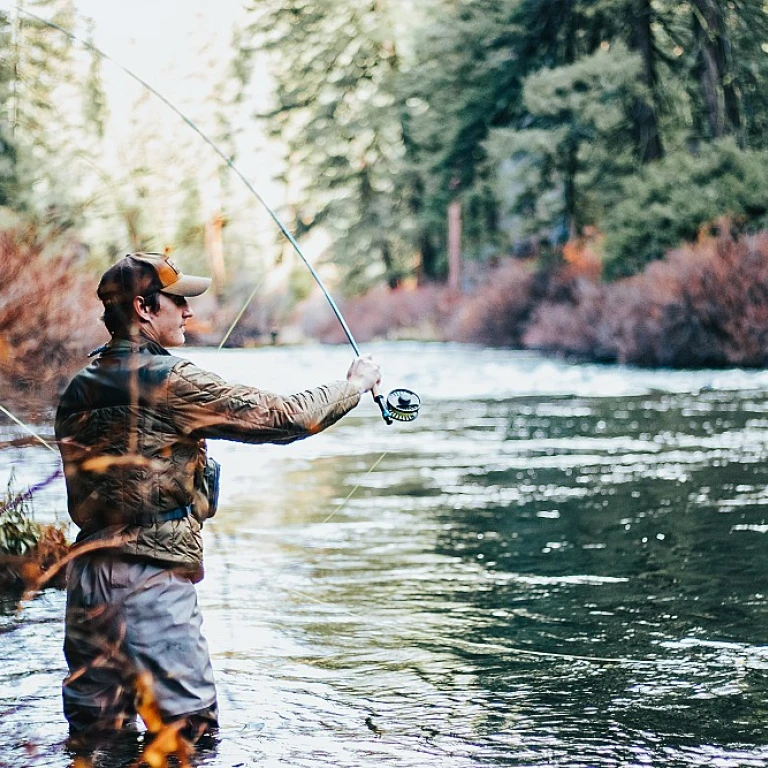Getting Started with Circle Hooks
Introduction to Circle Hooks
Circle hooks are a staple in the toolbox of any avid angler, particularly those who prioritize catch-and-release fishing. Designed to securely hook the fish without causing significant injury, these hooks naturally find their way into a fish's mouth corner, making extraction and releasing efforts more efficient and less harmful. As more fishers become environmentally conscious, the increased popularity of circle hooks is not surprising.
Circle hooks have a unique, rounded shape that requires a different approach than other hooks. Unlike traditional J-hooks, which often require a forceful jerk known as the 'set,' circle hooks naturally rotate and embed themselves when tension is applied through line movement. Familiarizing yourself with these hooks can lead to a more productive and sustainable fishing experience.
For those interested in boosting their aquatic adventures, the best center console boats offer exceptional maneuverability and space tailored to anglers' needs. When perfecting techniques such as snelling a circle hook, having a stable platform can transform a good trip into a great one.
Understanding the intricate aspects of fishing, like choosing the right equipment, ensures your time on the water is rewarding and successful. Whether you are a seasoned angler or just starting, learning about circle hooks will enhance your fishing expeditions significantly.
Understanding the Snell Knot
The Anatomy of the Snell Knot
To truly master the art of snelling a circle hook, one must first delve into the core elements that make the snell knot an angler's favorite. By understanding this knot, you will appreciate its unique ability to improve bait presentation and increase hook-up rates.
The snell knot is distinguished by its simplicity and reliability. Unlike other knots that might easily come undone or slip under pressure, the snell knot securely fastens the hook to the leader. This is essential for those challenging fishing scenarios where every strength advantage counts.
When you tie a snell knot, the line is wrapped around the shank of the hook, providing a streamlined presentation that is less likely to spook fish. This primarily benefits those using circle hooks, known for their efficient hooking capabilities. The smooth knot enhances the natural movement of the bait, which increases the chances of enticing a fish to bite.
Evaluating Knot Strength and Efficiency
To make an informed choice about knot usage, it is beneficial to compare the snell knot's strength and efficiency to other popular knots like the Palomar. While the Palomar knot is favored for its simplicity and strength, the snell knot offers a unique advantage for hooks with elongated shanks, such as circle hooks.
By opting for a snell knot, anglers can leverage the full power of a circle hook’s design. As it minimizes line stress, it ensures that the action of setting the hook is as powerful as possible. This attribute is particularly notable when targeting large species, as you need every bit of strength the knot can provide.
Maintaining Line Integrity
Another key factor in the snell knot's favor is its capacity to maintain line integrity. The alignment of the knot with the hook's shank reduces abrasion, thus extending the life of your line. This aspect is crucial when you consider the expense of high-quality fishing lines. For more details about choosing the right reel size for various fishing adventures, explore our in-depth guide on
understanding the right reel size.
By understanding these aspects of the snell knot, anglers can enhance their approach to securing bait and handling bigger catches. Armed with this information, you will be better prepared as you tie this versatile knot and experience its myriad benefits firsthand.
Step-by-Step Guide to Snelling a Circle Hook
The Essential Steps to Snelling Your Circle Hook
Once you've familiarized yourself with the utility of circle hooks and the functionality of the Snell Knot, you're ready to explore the intricate steps needed to successfully snell a circle hook. This process, although seemingly complex at first, becomes second nature with a bit of practice and patience.
Begin by cutting a length of leader line that suits your fishing needs. The leader should be long enough to work comfortably while snelling but not so long as to become cumbersome. For insights on choosing the appropriate type of fishing line, you can refer to this detailed guide on
the vibrant world of fishing lines.
- Thread the Hook: Start by passing the leader line through the eye of the circle hook from the hook’s front to the back. This ensures that the hook sets in a fish’s mouth correctly when it takes the bait.
- Create a Loop: Pull a length of line through the eye, creating a loop alongside the shank of the hook.
- Wrap It Up: Using the tag end of the leader, make several (usually 6-8) tightly wrapped turns around the shank of the hook and the leader itself. These wraps should remain parallel to the shank for maximum strength and efficiency.
- Secure the Knot: Pass the tag end of the leader back through the loop you've created and pull it tight to cinch the wraps down firmly against the shank.
- Trim the Excess: Finally, trim any excess tag end closely to the wraps, ensuring a neat finish without any loose ends that may tangle or fray.
Practice these steps with different line types and at various fishing locations to adapt and hone your skill in different environments. As you refine your technique, you'll find the Snell Knot becomes an indispensable tool in your fishing arsenal, offering both strength and reliability when it counts the most. Partner your perfectly snelled hook with the right bait and leader line to optimize your chances of a successful catch.
Comparing Knots: Snell vs. Palomar
Analyzing the Snell vs. Palomar Knot Debate
When it comes to fishing knots, it’s not uncommon to find anglers passionately debating the merits of the snell knot versus the palomar knot. Both are popular choices, but understanding their differences can significantly elevate your fishing game.
The snell knot, as elaborated in our previous sections, is frequently chosen for its ability to provide a strong, straight line pull with circle hooks, making it ideal for certain species and conditions. It effectively transmits force directly from the line to the hook shank, maintaining hook alignment that can lead to more successful hookups.
In contrast, the palomar knot, known for its simplicity and reliability, excels in scenarios where time and ease of tying are critical. It offers high tensile strength and is particularly effective with braided lines, which can be a game-changer depending on your fishing style and target species.
Choosing between these knots often boils down to personal preference, fishing conditions, and particular setups. For instance, a snell knot is preferable in situations where the hook set strength is crucial, while the palomar knot may be the go-to choice for quick rigging when time is of the essence.
For a deeper dive into choosing the right knot for various fishing expeditions, it's essential to consider the environmental factors and target fish species, as outlined in our previous guides on selecting proper leaders and bait. Seeking community insights can offer additional perspectives, potentially introducing you to innovative techniques or confirming best practices used by fellow anglers across different waters.
Choosing the Right Leader and Bait
Handpicking the Ideal Leader for Your Circle Hook
Choosing the right leader is a pivotal step in ensuring a successful fishing trip when using circle hooks. The leader not only connects your circle hook to the mainline but also plays a crucial role in the presentation of your bait and the overall durability against sharp structures or fish teeth. When selecting a leader, consider the type of fish you are targeting and their habitat. Heavy cover or rocky areas might require a robust leader to avoid breakage. Leaders made from materials like fluorocarbon provide invisibility underwater, making them an excellent choice when fishing in clear waters.
Matching Bait to Your Circle Hook
After you've mastered the snell knot and understand the nuances of circle hooks, your attention should focus on matching the right bait to your setup. Live bait such as shiners or minnows often works well because the circular motion of the hook complements the movement of live bait, ensuring a higher hook-up ratio. For those fishing in saltwater, options like shrimp or cut bait could be ideal, providing an enticing aroma and appearance to your target fish. Whether you're using artificial lures or live bait, ensuring they align with the natural diet of the targeted fish species can make all the difference in attracting bites.
Remember, the combination of a well-snelled circle hook, the right leader, and an appealing bait increases your chances of a successful catch. The choice of gear alongside these setups plays an integral part in enhancing both the fishing experience and results.
Community Insights and Tips
Community Insights and Tips for Snelling Success
As seasoned anglers and fishing enthusiasts can attest, there's always something new to learn when it comes to snelling a circle hook. The community of avid fishers has a wealth of insights and tips that can help refine your snelling technique and ensure you're getting the most out of every fishing trip. Let’s delve into some crowd-sourced wisdom that might just change the way you approach this seemingly simple task.
One popular community suggestion is the emphasis on practice. As we've explored in our step-by-step guide, mastering the snell knot requires repetition and a bit of patience. Many experienced anglers suggest beginning with larger hooks and thicker lines to practice the knot, as it's often easier to handle and see the pattern in detail. Once you’ve nailed the technique, transitioning to finer tackle will be much smoother and less frustrating.
Social platforms and local fishing forums are brimming with DIY tips for optimizing snell knots for specific conditions. For instance, some anglers swear by using a dab of waterproof glue on the knot for added security, especially when targeting larger species. Others recommend experimenting with different angles and tension on the line while tying the knot to see what holds best under pressure.
Sharing knowledge about the use of circle hooks doesn't stop at the knots! The community advocates for the right combination of hook size, leader, and bait - critical factors for a successful catch. Pairing your hook with the appropriate leader not only enhances the effectiveness of your fishing setup but also can impact the lifecycle of your tackle gear. If you've found yourself struggling with these choices, consider revisiting our in-depth discussions about snell vs. palomar knots and how they integrate into your overall strategy.
Lastly, remember that fishing is as much about adapting to new methods as it is about tradition. Engaging with fellow anglers at your local tackle shop or joining online groups can be a fantastic way to exchange information, troubleshoot issues, and discover new techniques. After all, part of what makes fishing such a rewarding pastime is the community and the shared experiences that come along with it."

